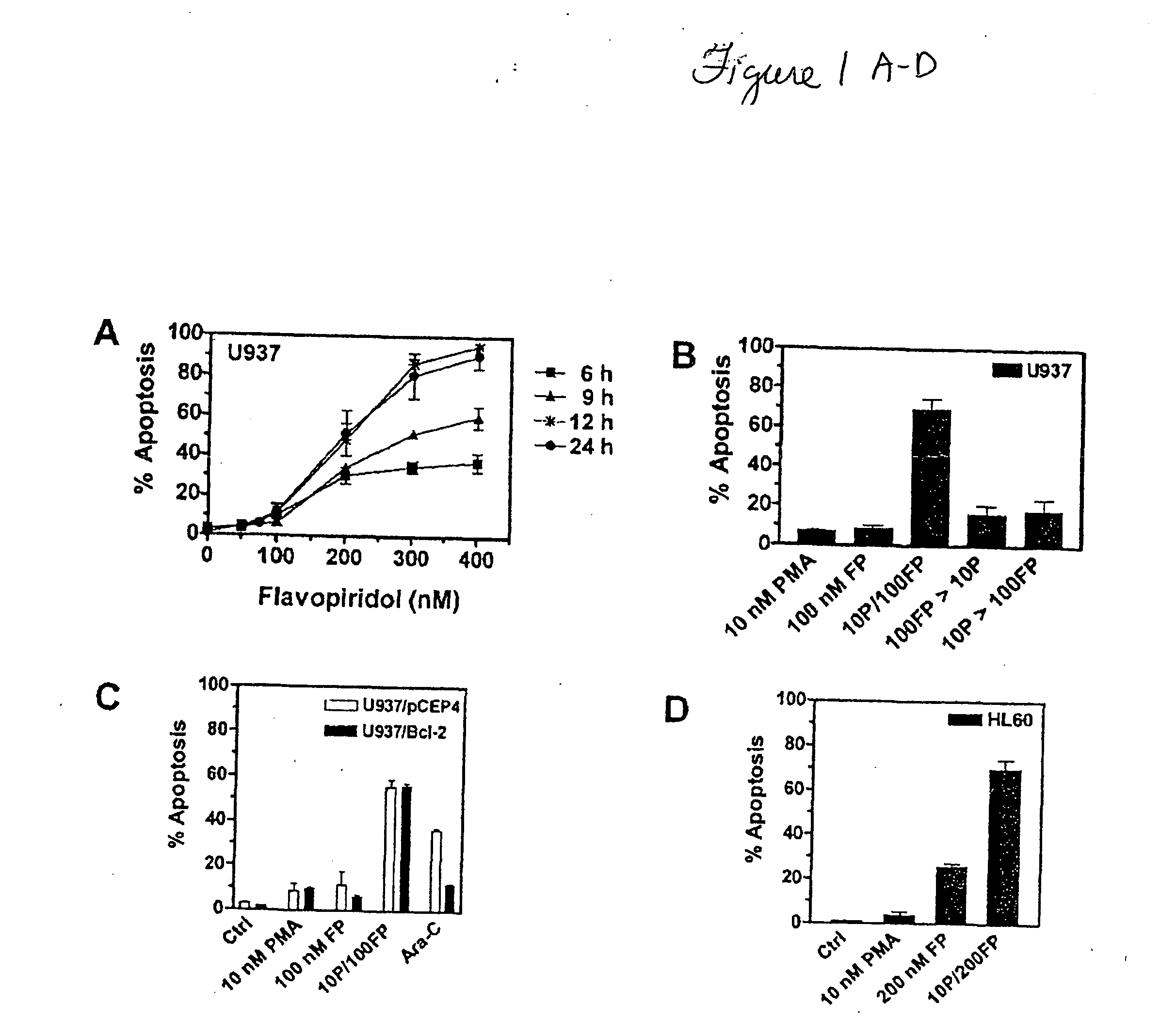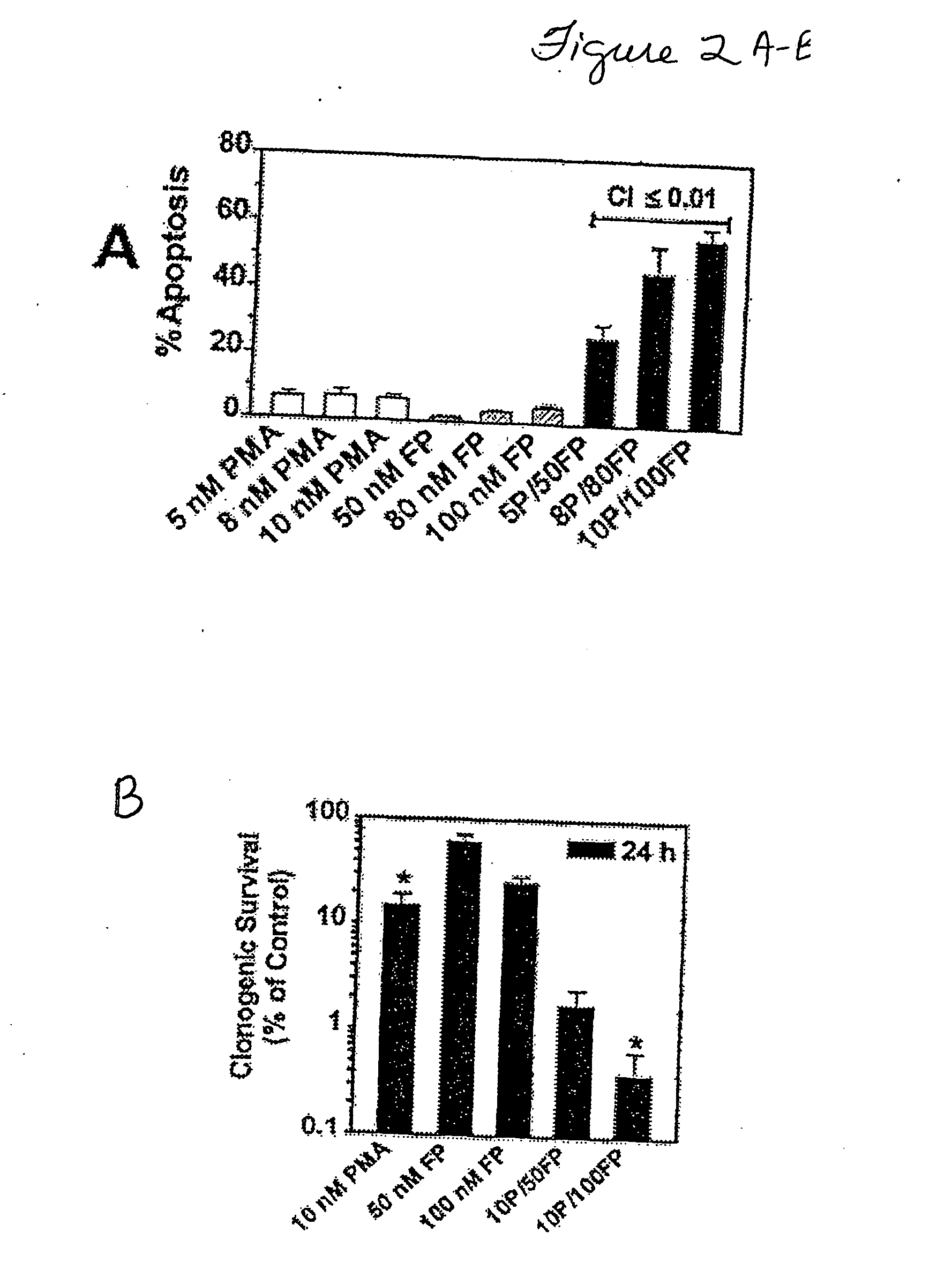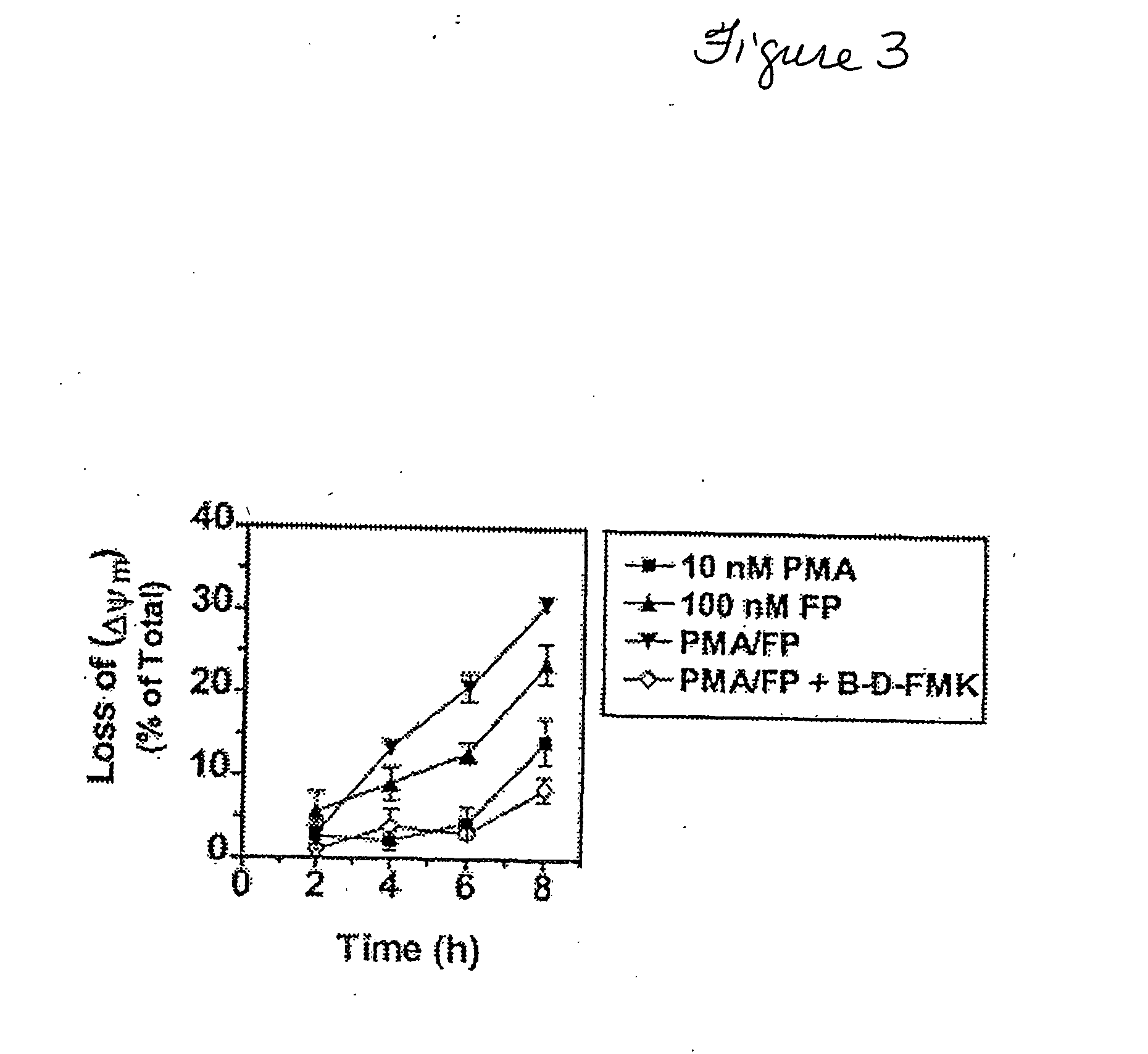Promotion of adoptosis in cancer cells by co-administration of cyclin dependent kinase inhibitiors and cellular differentiation agents
a technology of cyclin dependent kinase inhibitors and cancer cells, which is applied in the direction of biocide, drug compositions, peptide/protein ingredients, etc., can solve the problems of increasing the apoptosis of targeted cancer cells, recalcitrant to known treatment regimes, and little information currently available regarding interactions between fp and other classes of drugs used in cancer treatment, so as to reduce the binding of e2f and reduce the binding of prb/e2
- Summary
- Abstract
- Description
- Claims
- Application Information
AI Technical Summary
Benefits of technology
Problems solved by technology
Method used
Image
Examples
example 1
FP and PMA Promote Apoptosis in Human Leukemia Cells
[0059] To evaluate the dose response for FP-induced apoptosis, U937 cells were exposed to various concentrations of FP (e.g., 50-400 nM) for 6, 9, 12, or 24 h, after which apoptosis was determined by morphologic assessment of Wright and Giemsa-stained cytospin preparations (FIG. 1A). U937 cells were susceptible to apoptosis following chronic exposures (e.g., 12 or 24 h) to FP concentrations≧200 nM, whereas concentrations≦100 nM minimally induced apoptosis (e.g., ≦10% of cells), regardless of the treatment interval. Subsequently, the extent of apoptosis was assessed in U937 cells exposed to 100 nM FP in combination with a minimally toxic concentration of PMA (10 nM). Three schedules were evaluated: (a) co-administration of the agents for 24 h; (b) 10 nM PMA for 24 h, followed by 100 nM FP for 24 h; or (c) 100 nM FP for 24 h, followed by 10 nM PMA for 24 h.
[0060] Co-administration of 10 nM PMA and 100 nM FP for 24 h (FIG. 1B) resul...
example 2
FP Combined with PMA Promotes Mitochondrial Damage Upstream of Caspase Activation
[0066] The effects of FP and PMA on mitochondrial injury [e.g., loss of mitochondrial membrane potential (Δψm)], an event that can precede the morphological features of apoptosis [Marchetti et al. 1996], was assessed at early time points (e.g., 2-8 h; FIG. 3A). The combination of FP (100 nM) and PMA (10 nM) triggered the greatest decline in Δψm at the 4-8 h exposure intervals, although reductions were noted in cells treated with FP alone at these times. Co-administration of the pancaspase inhibitor, BOC-Asp(OMe)-fluoromethyl ketone (B-D-FMK; 20 μM), effectively blocked the loss of Δψm in cells exposed to PMA and FP, suggesting that this event represents a consequence of caspase activation. In addition, U937 cells treated with the combination of PMA and FP for 6 h displayed a more pronounced release of cytochrome c into the cytosol than cells treated with PMA or FP alone, although FP alone had some effe...
example 3
FP Antagonizes PMA-Induced Differentiation
[0068] Induction of leukemic cell maturation can be accompanied by apoptosis [Gunji et al. 1992]; therefore, it is conceivable that PMA / FP-mediated cell death could result from enhanced cellular differentiation. Thus, the effects of FP were examined with respect to PMA-related induction of the monocytic maturation marker, CD11b (FIG. 4A). FP did not enhance PMA-mediated induction of CD11l at 24 h; instead, FP co-treatment significantly reduced the percentage of cells displaying CD11b expression from 26% to 9.0% (p<0.03). FP (100 nM) co-treatment also significantly decreased PMA-induced plastic adherence, another manifestation of U937 cellular maturation, from 80% to 16% (p<0.001), (FIG. 4B).
[0069] Thus, despite its CDK inhibitory activity, FP significantly antagonized PMA-induced differentiation in U937 cells.
PUM
| Property | Measurement | Unit |
|---|---|---|
| time | aaaaa | aaaaa |
| concentration | aaaaa | aaaaa |
| concentration | aaaaa | aaaaa |
Abstract
Description
Claims
Application Information
 Login to View More
Login to View More - R&D
- Intellectual Property
- Life Sciences
- Materials
- Tech Scout
- Unparalleled Data Quality
- Higher Quality Content
- 60% Fewer Hallucinations
Browse by: Latest US Patents, China's latest patents, Technical Efficacy Thesaurus, Application Domain, Technology Topic, Popular Technical Reports.
© 2025 PatSnap. All rights reserved.Legal|Privacy policy|Modern Slavery Act Transparency Statement|Sitemap|About US| Contact US: help@patsnap.com



